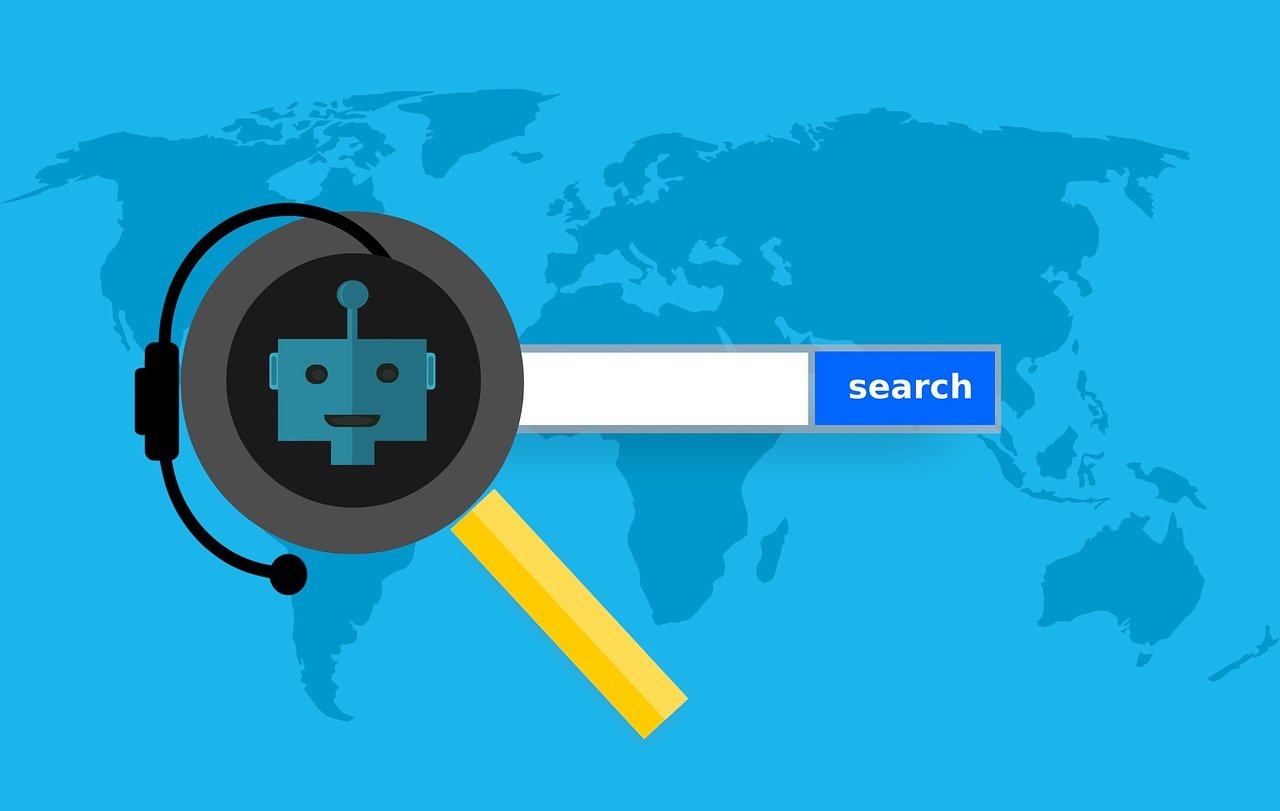
The Future of Search : AI SEO, AEO, and AI Search Explained
What Is Answer Engine Optimisation (AEO or AI SEO)?
Answer Engine Optimisation (AEO) is the next frontier of search visibility. It’s about creating content that AI systems can understand, trust, and use directly as an answer, not just as another blue link. Today, search engines increasingly display AI answers directly in results, highlighting the quality and accuracy of these AI-generated responses.
In traditional SEO, you optimise for Google’s ranking factors: backlinks, keywords, crawlability, and user engagement. In AEO, you’re optimising for AI-powered systems like ChatGPT, Perplexity, Gemini, and Google’s AI Overviews, platforms that give answers instead of listing pages. Optimising content for these platforms increases the likelihood of your information being cited as AI-generated answers, which can significantly boost your visibility.
In simple terms, AEO helps your brand become the answer, not just part of the search results. Optimising content specifically for AI-driven platforms is essential to ensure your brand is referenced in AI answers and AI-generated answers.
How AEO Works
AEO works by aligning your content structure, schema, and tone with how AI engines read and summarise the web. The process looks like this:
- Start with questions. Find what users actually ask, tools like AnswerThePublic, People Also Ask, and Ubersuggest (which is our go-to) are your friends. Identify your target keyword and related target keywords to ensure your content aligns with user intent.
- Lead with the answer. Open every section with a 1–3 sentence summary that directly addresses the question.
- Add structured data. Use the FAQ, HowTo, and QAPage schema so that AI systems can extract your content cleanly.
- Write for scanability. Short paragraphs, clear headers, and bolded key phrases make your page more readable and indexable.
- Use internal links. Incorporate internal links to build topic authority, establish content relationships, and help AI engines understand your website structure.
It’s less about long-form storytelling and more about clarity, authority, and structure.
AEO vs. SEO vs. Generative Engine Optimisation (GEO)
| Focus | SEO | AEO | GEO |
| Goal | Rank in search engines | Be featured as a direct answer | Be cited in AI-generated content |
| Platform | Google, Bing, Yahoo | ChatGPT, Perplexity, AI Overviews | Generative AI models |
| Optimisation | Keywords, backlinks, content quality | Schema, clarity, conversational phrasing | Data authority, source credibility |
| Output | Web traffic | Voice or snippet answers | AI citations and mentions |
AEO and GEO both aim to optimise content for AI-generated results, which prioritise unique, high-value information and proper structuring to be selected by AI-powered search engines. This is a shift from the traditional search experience of blue links and web traffic, as AI-generated results provide direct answers and integrated responses.
SEO is about being found. AEO is about being chosen. GEO (Generative Engine Optimisation) is about being trusted by AI models as a cited source.
All three overlap, but AEO is the bridge between traditional search and AI search; it’s where visibility becomes immediate authority. Unlike the traditional search experience, which relies on keyword-based algorithms and multiple clicks, the new AI-driven approach delivers direct, summarised answers through AI-generated results.
Why AI Search Is Changing Everything
AI search isn’t coming; it’s already here.
Over 57% of Google searches now end without a click, and 80% of Gen Z users prefer asking questions via AI or voice assistants. Platforms like ChatGPT, Gemini, and Perplexity have completely changed how people discover information. Unlike traditional keyword-based search engines, an AI search engine uses artificial intelligence to understand user intent, process natural language queries, and deliver more relevant results with direct answers and cited sources.
This shift is also influenced by search volume, as high search volume keywords are increasingly targeted by AI-driven answers, reducing the need for users to click through to websites.
Instead of typing “best running shoes” into Google and sifting through 10 links, a user now asks:
“What are the best running shoes for marathon training?”
The AI then gives one direct answer, often quoting or summarising a brand’s content. If your business isn’t optimised for this ecosystem, you’re invisible.
Examples of AI Search Engines and Answer Engines

- ChatGPT / Copilot – Provides conversational answers, often referencing trusted sources.
- Google AI Overviews – Integrates AI summaries directly into SERPs.
- AI Mode (Google Labs) – An experimental feature offering AI-enhanced search overviews and innovative tools to improve search results and content optimisation, influencing SEO strategies and content visibility.
- Perplexity AI – Cites sources and rewards clarity, freshness, and authority.
- Gemini (Google Bard) – Uses factual and contextual signals to pull direct answers.
These platforms represent the zero-click world, a space where visibility, not traffic, is the goal. AEO ensures your brand’s message still gets heard even when no one clicks through.
How AI and SEO Work Together
AI isn’t killing SEO, it’s rewriting the rules. AI tools are transforming SEO research by providing deeper insights and actionable recommendations that help improve content ranking.
- AI SEO Means Smarter, Not Harder
Traditional SEO relied on chasing algorithms. AI SEO focuses on training algorithms, helping them understand your content, intent, and authority.
When your site structure, metadata, and schema are aligned, AI engines can easily summarise your content, rewarding you with featured spots and citations.
- AI in SEO Enhances Relevance and Search Intent
AI tools like RankBrain, BERT, and SGE analyse user intent, not just keywords. Incorporating AI in SEO means:
- Writing conversationally (how people ask questions)
- Using entities and context over keyword stuffing
- Feeding models with structured, high-quality data
When AI understands your content, it doesn’t just recommend it, it amplifies it.
- Schema, Structured Data & Zero-Click Search
The secret sauce of AEO is schema markup, the data layer that helps machines interpret your content.
Use:
- FAQ Page for Q&A formats
- HowTo for step-based content
- Article and Product schema for clarity
This increases your visibility in AI Overviews, voice assistants, and rich snippets, where zero-click results dominate.
- Voice Search and Conversational Queries
With Siri, Alexa, and Google Assistant, natural language is king. Optimise your content for how people speak, not just how they type.
Example:
- Typed: “divorce lawyer London”
- Spoken: “Who’s the best family lawyer near me?”
Voice-optimised content captures intent, and AEO ensures your site provides the answer.
AI SEO Tools: Platforms and Solutions
The rapid evolution of AI search engines and generative engine optimisation (a relatively new but increasingly important field) has made AI-powered SEO tools indispensable for anyone serious about search engine optimisation – and in my view, this shift is only accelerating. These advanced platforms streamline SEO tasks (everything from keyword research and content creation to on-page optimisation and rank tracking), helping you and your brand stay visible in both traditional search engines and the new wave of AI search that is, frankly, becoming impossible to ignore if you want to remain competitive in today’s digital landscape.
Popular AI SEO Tools and Their Use Cases

Ahrefs AI Content Helper is, in my experience, designed to genuinely supercharge your content creation process (and I have seen this work firsthand with many clients). It offers what I would describe as actionable keyword suggestions, generates compelling meta descriptions, and performs in-depth content gap analysis that is, arguably, among the best in the industry. By identifying what your top-ranking pages are missing – something that is often overlooked – it helps you optimise existing content for both search engines and AI search engines, ensuring your website content aligns with current search intent and maximises organic search results in ways that are increasingly important.
Surfer SEO is an AI-powered SEO toolkit that takes content optimisation to what I would confidently say is the next level. It analyses keyword data, semantic relevance, and competitor strategies to help you create human-written content that meets the expectations of both traditional search engines and AI-powered platforms (a distinction that is becoming increasingly crucial, in my view). Surfer SEO’s content gap analysis and on-page optimisation features make it remarkably easy to identify content gaps and optimise content for higher visibility in search results, though the learning curve can be steep for newcomers.
SE Ranking is a comprehensive AI-powered SEO platform that covers everything from keyword tracking and rank tracking to website audits and backlink analysis (which, anecdotally, I find to be quite thorough). Its intuitive dashboard helps SEO teams monitor organic traffic, optimise existing content, and create content that matches evolving search queries and generative engine optimisation standards. SE Ranking is, arguably, ideal for SEO agencies and professionals looking to streamline their SEO strategy with advanced AI features, though you should be prepared for the initial setup time.
Writesonic is an AI writer that leverages natural language processing to automatically generate high-quality, SEO-friendly content (with results that are, in all likelihood, better than many human writers). With custom templates, keyword suggestions, and content optimisation tools, Writesonic enables you to create content that ranks well in organic search results and appeals to both users and AI search engines. It’s what I would describe as a valuable asset for scaling your content creation process without sacrificing quality, assuming you provide proper oversight.
Koala AI simplifies the content generation process with user-friendly AI tools for keyword research, meta descriptions, and content optimisation (something that many platforms overcomplicate, in my experience). It helps you identify content gaps, optimise website content, and improve your brand’s visibility in search results in ways that are both practical and achievable. Koala AI is especially useful for site owners and SEO strategists looking to enhance their SEO efforts with minimal technical overhead, which is increasingly important given the complexity of modern SEO.
Rankability is an AI-powered SEO tool focused on identifying content gaps and creating optimised content that drives organic traffic (which, anecdotally, I have seen produce impressive results). Its keyword clustering, backlink analysis, and rank tracking features provide deep insights into your SEO data, helping you refine your SEO strategy and boost your site’s performance in both traditional search and AI search environments. The platform is, arguably, one of the more sophisticated options available, though this does come with a steeper learning curve.
SEO.AI is what I would describe as a robust AI SEO platform that automates keyword research, content creation, and page optimisation in ways that are genuinely impressive. It enables you to automatically generate high-quality, semantically relevant content that meets the requirements of both search engines and AI search engines (a balance that is notoriously difficult to achieve). SEO.AI’s advanced AI features make it, in my view, a go-to solution for SEO professionals aiming to stay ahead in the rapidly changing world of search, though you should expect to invest time in understanding its full capabilities.
By integrating these AI-powered SEO tools into your workflow, you can streamline SEO tasks, optimise content for both traditional and AI search engines, and ensure your brand remains visible in an increasingly competitive digital landscape (which is, arguably, more challenging than ever before). Whether you’re focused on keyword research, content gap analysis, or optimising existing content, these platforms provide the SEO toolkit you need to lead in the era of AI search. In my experience, the investment in these tools more than pays for itself, assuming you approach them with realistic expectations and proper planning.
The Future of SEO in the Age of AI

Search is no longer about keywords. It’s about context, accuracy, and trust. Today, brand visibility is increasingly measured by how often your brand is mentioned or cited in AI-generated content and search engine results.
AEO brings a new metric into play: visibility without clicks. Being cited or quoted in an AI answer builds trust faster than any meta description ever could. Tracking your brand’s visibility across AI platforms and search engines is now essential for understanding and improving your online presence.
Additionally, analysing word count during content creation can help optimize your content for AI-driven answers and improve your chances of being featured.
Tracking and Measuring AEO
Right now, tracking AEO performance is still evolving. Unlike Google Search Console or Ahrefs, there’s no single “AEO dashboard.” But you can monitor:
- Mentions in ChatGPT, Perplexity, or Gemini (manually or via tools like OmniSEO)
- Visibility in AI Overviews
- Citation frequency and source mentions
- Referral traffic from AI-powered browsers
The key is to measure influence, not just traffic.
Challenges of AEO
- No universal analytics: Harder to quantify direct AI mentions.
- Constant evolution: Engines update rapidly; best practices shift monthly.
- Content fatigue: AI demands freshness; outdated posts get ignored fast.
Despite these challenges, the payoff is huge. Brands optimising for AEO now are building first-mover advantage in the next era of digital visibility.
How to Implement AEO & AI SEO Today
You don’t need an enterprise platform to start. Here’s a simple, practical roadmap:
- Audit your content. Identify your highest-performing SEO pages and reformat them for questions and clarity. You can use Google Docs with SEO Chrome extensions to highlight keywords and optimise your content as you draft.
- Add schema markup. Use free tools like Google’s Structured Data Markup Helper.
- Rewrite for AI readability. Answer each question in the first 2–3 lines, then elaborate.
- Test with AI tools. Ask ChatGPT or Perplexity your target questions, see if you appear or could be cited. Link building is also crucial; connect with site owners to secure credible backlinks and improve your authority and visibility in AI-driven search.
- Monitor and iterate. Track impressions, citations, and AI mentions monthly.
Remember: AEO compounds. The clearer and more authoritative your content becomes, the more AI engines rely on it. Outreach to site owners for link building can further support your AEO efforts.
Final Thoughts: Building for Humans and Machines
AI search isn’t the end of SEO; it’s its evolution. The brands that win are those that understand how humans ask questions and how machines find answers. AEO bridges both worlds. It forces marketers to distil expertise into clarity. It rewards depth, not fluff.
And as search becomes conversational, your brand’s tone and trustworthiness become your most valuable assets.
If you’ve mastered SEO, it’s time to move beyond ranking and start owning the answers.
Ready to Lead in the AI Search Era?
At Fabled Labs, we specialise in helping brands future-proof their visibility with AI-driven SEO and AEO strategies. We don’t just chase rankings, we build brands that own the conversation across Google, ChatGPT, and every emerging AI engine.
To discover how we can accelerate your AI-driven search growth strategy, get in touch at hello@fabledlabs.co or visit fabledlabs.co/contact



